Abstract
Groups of pigs were brought to an abattior by truck and approximately 25 were killed on each of the next 3 days. While the pigs were in lairage they were given water but were not fed. After slaughter the caecal contents of all pigs were cultured to detect Salmonella spp. The organism was isolated from 70% of 145 pigs killed after 1 day in lairage, 49% of 143 pigs that had been in lairage for 2 days and 41% of 135 pigs that had been held for 3 days.
Full text
PDF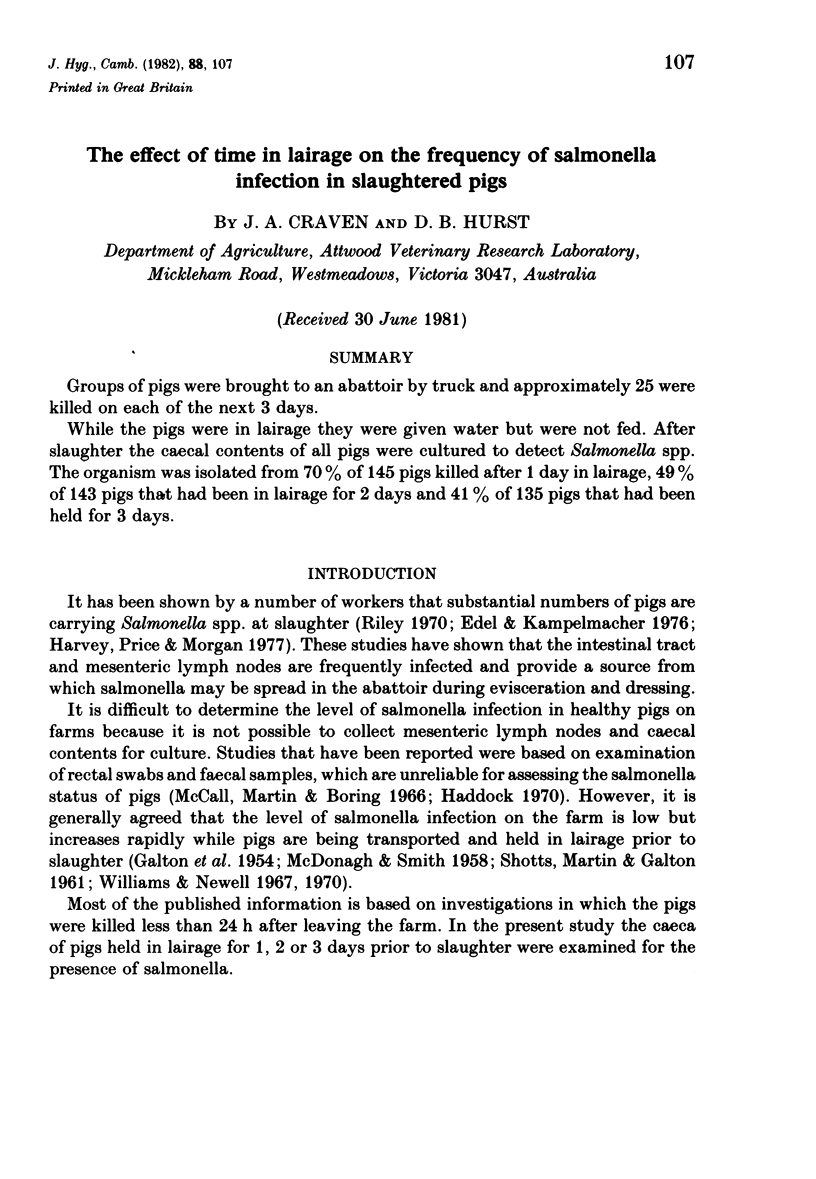
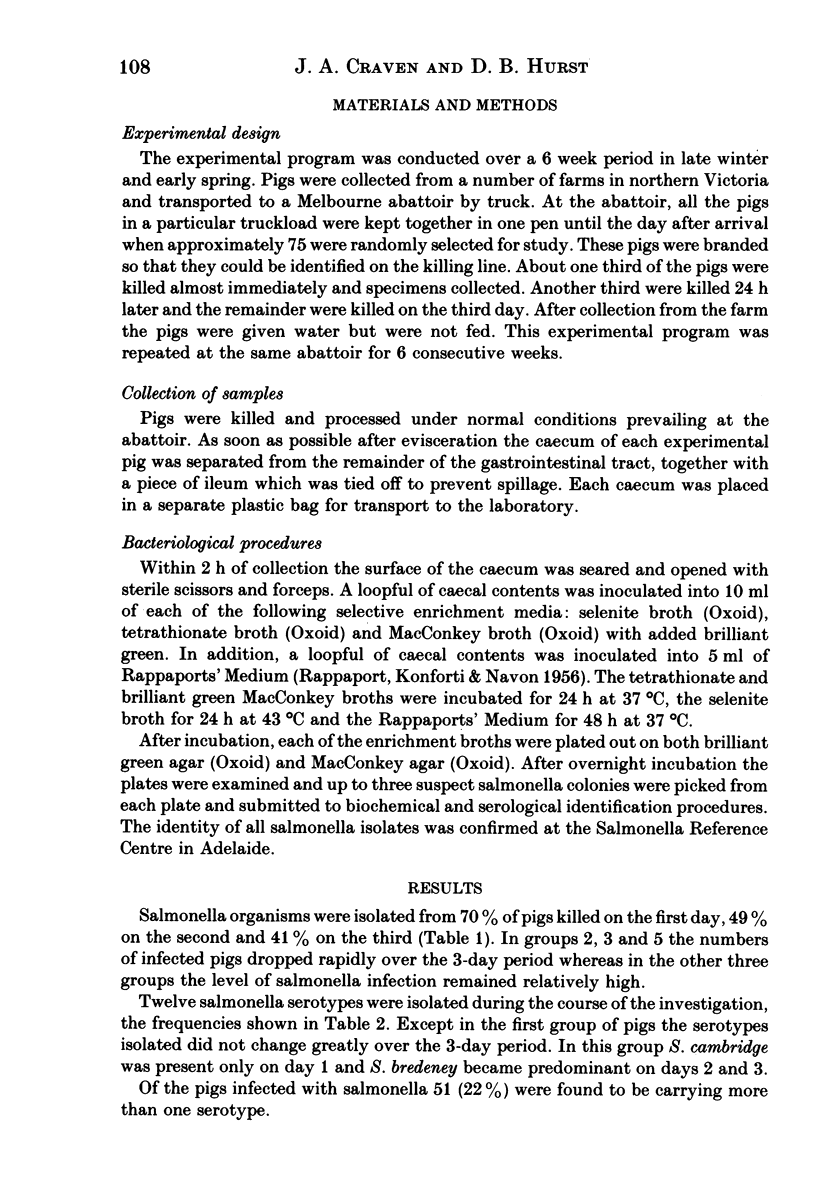
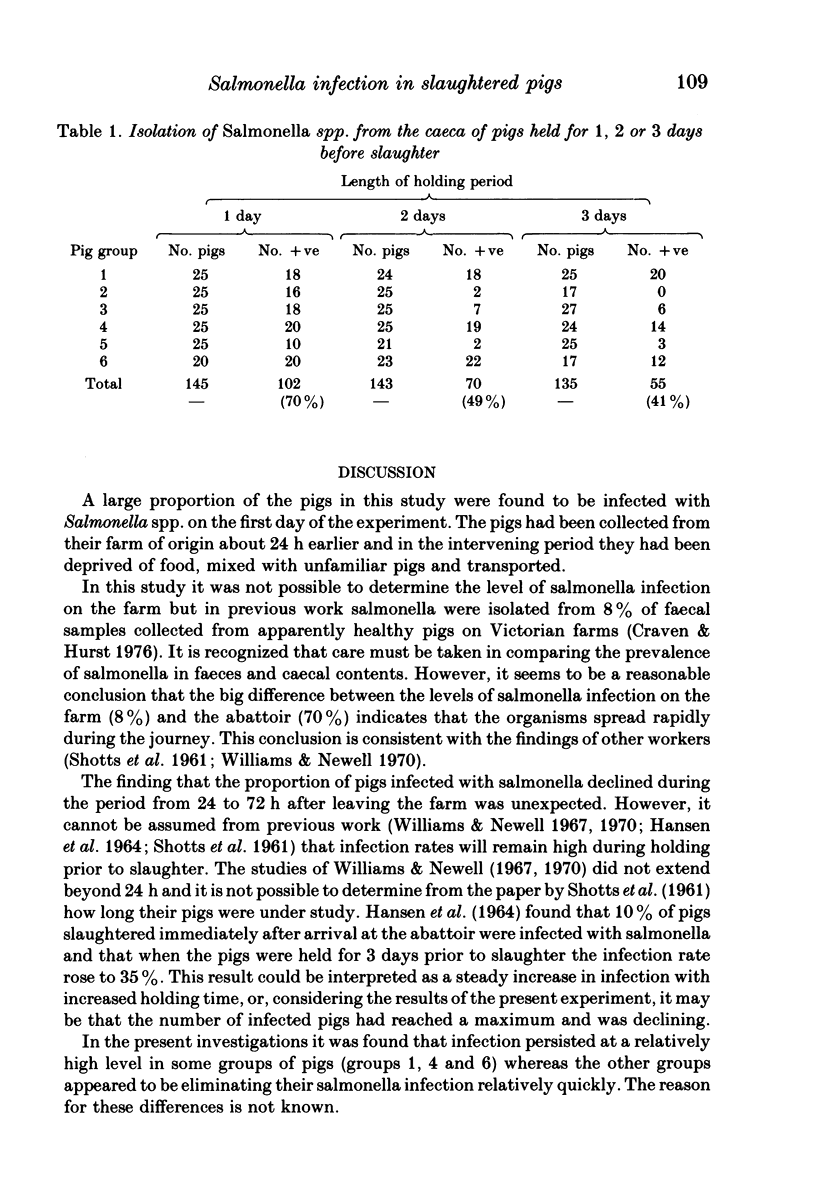
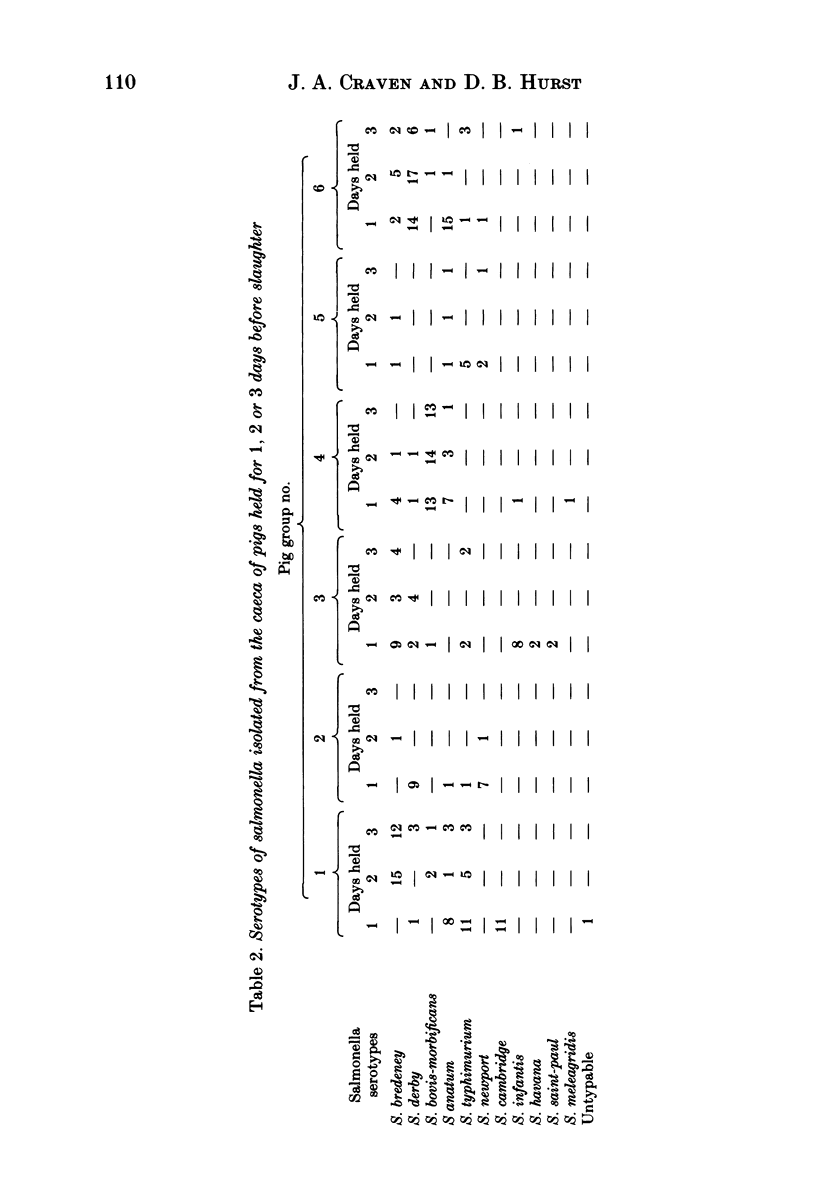
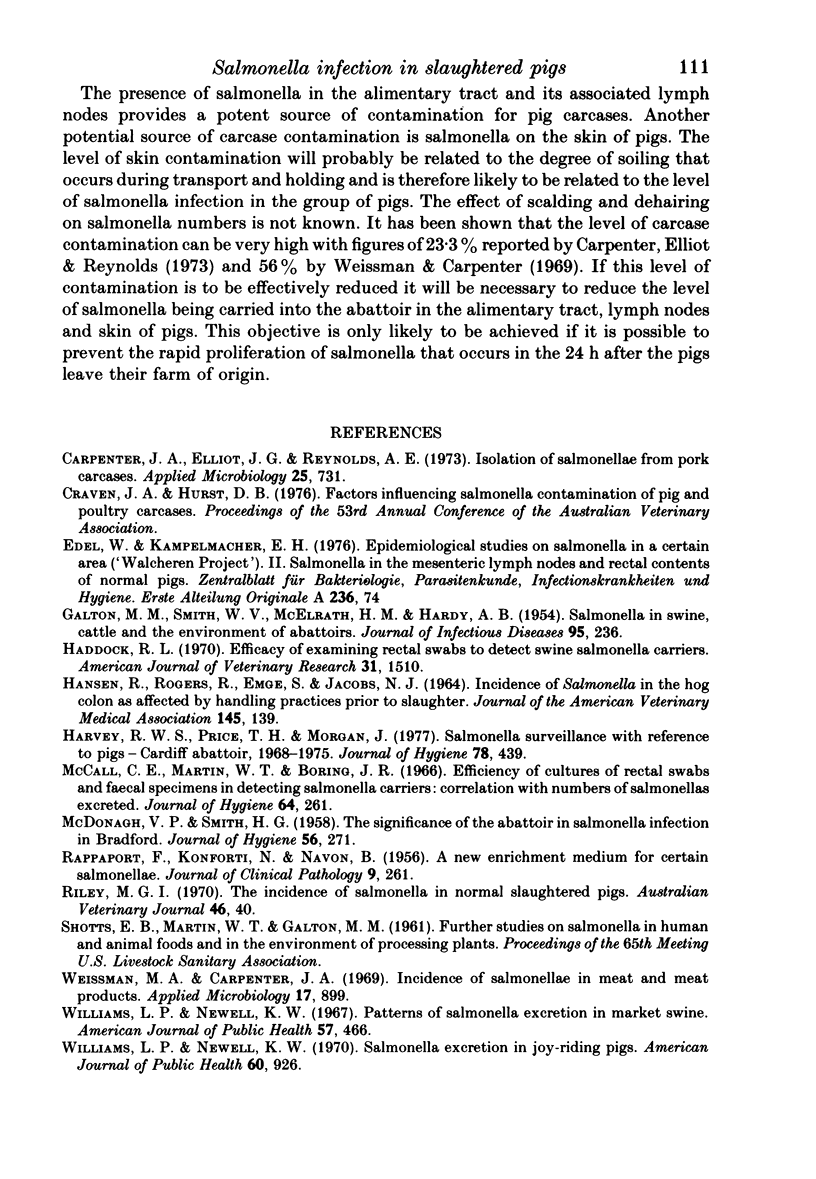
Selected References
These references are in PubMed. This may not be the complete list of references from this article.
- Carpenter J. A., Elliot J. G., Reynolds A. E. Isolation of salmonellae from pork carcasses. Appl Microbiol. 1973 May;25(5):731–734. doi: 10.1128/am.25.5.731-734.1973. [DOI] [PMC free article] [PubMed] [Google Scholar]
- GALTON M. M., SMITH W. V., McELRATH H. B., HARDY A. B. Salmonella in swine, cattle and the environment of abattoirs. J Infect Dis. 1954 Nov-Dec;95(3):236–245. doi: 10.1093/infdis/95.3.236. [DOI] [PubMed] [Google Scholar]
- HANSEN R., ROGERS R., EMGE S., JACOBS N. J. INCIDENCE OF SALMONELLA IN THE HOG COLON AS AFFECTED BY HANDLING PRACTICES PRIOR TO SLAUGHTER. J Am Vet Med Assoc. 1964 Jul 15;145:139–140. [PubMed] [Google Scholar]
- Harvey R. W., Price T. H., Morgan J. Salmonella surveillance with reference to pigs--Cardiff abattoir, 1968-1975. J Hyg (Lond) 1977 Jun;78(3):439–448. doi: 10.1017/s0022172400056333. [DOI] [PMC free article] [PubMed] [Google Scholar]
- KONFORTI N., NAVON B., RAPPAPORT F. A new enrichment medium for certain Salmonellae. J Clin Pathol. 1956 Aug;9(3):261–266. doi: 10.1136/jcp.9.3.261. [DOI] [PMC free article] [PubMed] [Google Scholar]
- McCall C. E., Martin W. T., Boring J. R. Efficiency of cultures of rectal swabs and faecal specimens in detecting salmonella carriers: correlation with numbers of salmonellas excreted. J Hyg (Lond) 1966 Sep;64(3):261–269. doi: 10.1017/s0022172400040547. [DOI] [PMC free article] [PubMed] [Google Scholar]
- McDONAGH V. P., SMITH H. G. The significance of the abattoir in salmonella infection in Bradford. J Hyg (Lond) 1958 Jun;56(2):271–279. doi: 10.1017/s002217240003775x. [DOI] [PMC free article] [PubMed] [Google Scholar]
- Riley M. G. The incidence of Salmonella in normal slaughtered pigs. Aust Vet J. 1970 Feb;46(2):40–43. doi: 10.1111/j.1751-0813.1970.tb05027.x. [DOI] [PubMed] [Google Scholar]
- Weissman M. A., Carpenter J. A. Incidence of salmonellae in meat and meat products. Appl Microbiol. 1969 Jun;17(6):899–902. doi: 10.1128/am.17.6.899-902.1969. [DOI] [PMC free article] [PubMed] [Google Scholar]
- Williams L. P., Jr, Newell K. W. Patterns of Salmonella excretion in market swine. Am J Public Health Nations Health. 1967 Mar;57(3):466–471. doi: 10.2105/ajph.57.3.466. [DOI] [PMC free article] [PubMed] [Google Scholar]
- Williams L. P., Jr, Newell K. W. Salmonella excretion in joy-riding pigs. Am J Public Health Nations Health. 1970 May;60(5):926–929. doi: 10.2105/ajph.60.5.926. [DOI] [PMC free article] [PubMed] [Google Scholar]


